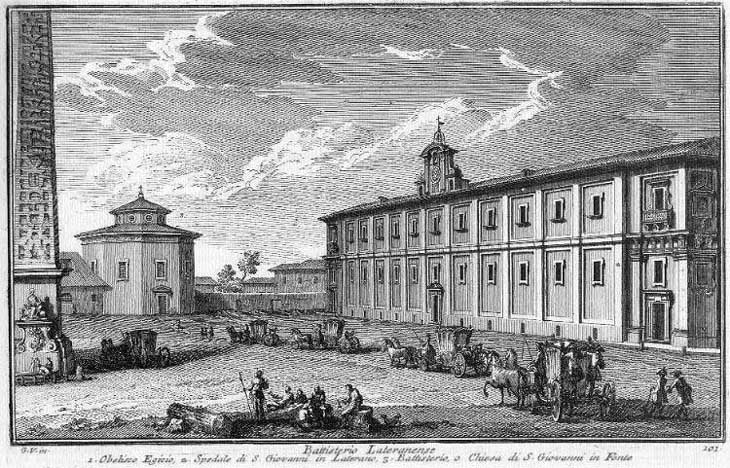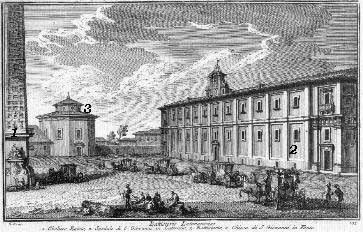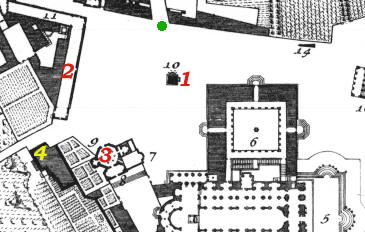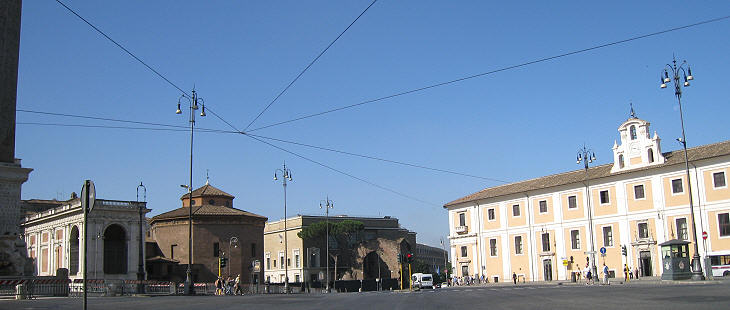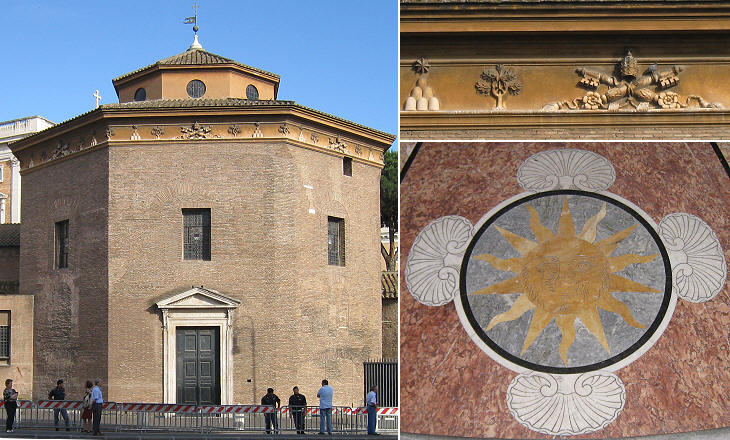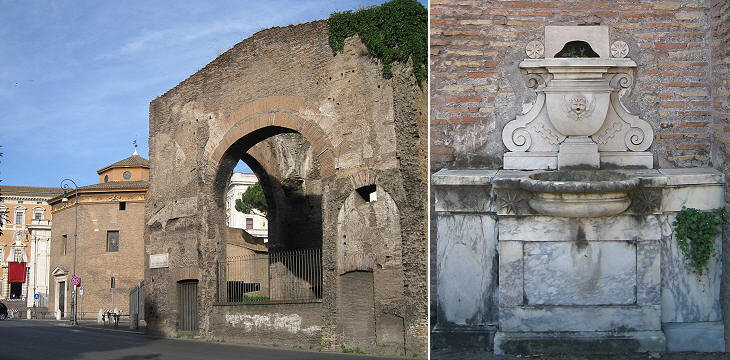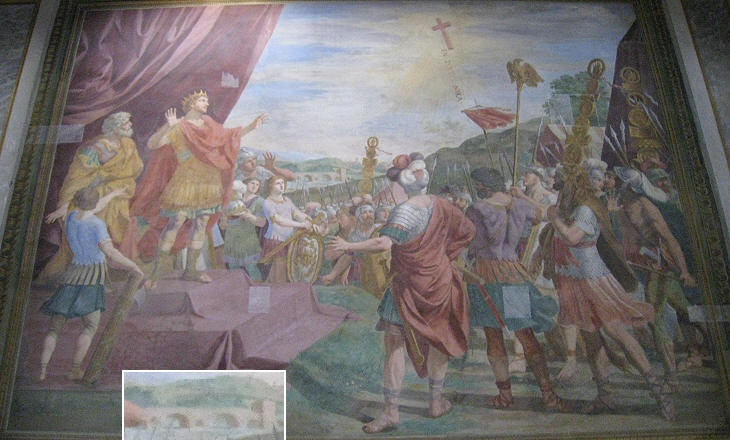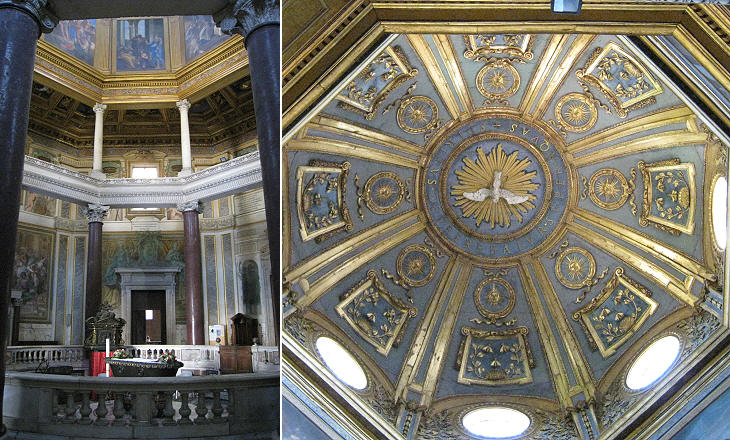  What's New! Detailed Sitemap All images © by Roberto Piperno, owner of the domain. Write to romapip@quipo.it. Text edited by Rosamie Moore. Page revised in August 2009. | Battisterio Lateranense (Book 6) (Map A4) (Day 1) (View C9) (Rione Monti) In this page: The plate by Giuseppe Vasi Today's view The Baptistery The Plate (No. 101)
This is one of three views of Piazza di S. Giovanni in Laterano; the others are plate 34 (named after the piazza) and plate 172 (Spedale di S. Giovanni). The focus of this plate is on the Baptistery, but Vasi takes the opportunity for showing the hieroglyphs of the obelisk. The view is taken from the green dot in the small 1748 map here below. In the description below the plate Vasi made reference to: 1) Obelisco Egizio; 2) Spedale di S. Giovanni; 3) Battisterio. 1) and 2) are shown in detail in other pages. The small map shows also 4) the location of Roman baths found inside some old buildings.
Today
In the XVIIIth century Piazza S. Giovanni in Laterano was a busy place only during possessio the ceremony by which a newly elected pope took possession of his charge as Bishop of Rome, and other religious processions. Today it usually has very heavy traffic as it is located between the city centre and the southern suburbs of Rome, including EUR. The monuments shown by Vasi have not been modified, but the opening of a modern road between the Baptistery and Spedale di S. Giovanni revealed that some houses incorporated the remains of ancient (private) Roman baths. The Baptistery
For centuries the main entrance to the Baptistery was from the opposite side: it was preceded by a Vth century small portico with two porphyry columns. In 1575, in the frame of the redesign of the whole Lateran area, Pope Gregory XIII opened an entrance from the square; it was the beginning of a series of modifications/restorations which lasted for almost a century until they were completed by Pope Alexander VII.
The Baptistery was built by Emperor Constantine and it probably had a circular shape which was turned into an octagon in the Vth century. According to Liber Pontificalis, a medieval chronicle of the lives of the popes, the Baptistery was provided with facilities for administering baptism by immersion. The official name of the building was S. Giovanni in Fonte (spring/fountain).
Throughout the Middle Ages Emperor Constantine was regarded as almost the co-founder of the Church; during the Renaissance his figure was shadowed by interest and admiration for his predecessors, chiefly emperors Augustus and Trajan. In the XVIIth century the Roman Church started to emphasize again the importance of Constantine; it was a period of religion wars and he was regarded as the example of a king who embraced the true faith. Pope Urban VIII promoted the decoration of the interior of the Baptistery with large frescoes portraying events of Constantine's life; in Rome there were several statues portraying the emperor and it was known that he was clean-shaven, how his hair was combed and other aspects of his face. The true objective of portraying Constantine, however was that of representing a XVIIth century king who supported the Roman Catholic faith: in this fresco Constantine has light beard and moustache and he wears the crown of a "modern" king (see Bernini's statue of Constantine).
Battisterio Lateranense was for a long time the only baptistery in Rome and its octagonal shape provided a model for many others in Rome and elsewhere in Italy (Florence, Parma). Excerpts from Giuseppe Vasi 1761 Itinerary related to this page:
Next plate in Book 6: S. Maria in Campo Corleo Next step in Day 1 itinerary: Porta S. Giovanni Next step in your tour of Rione Monti: Piazza di S. Giovanni in Laterano |
